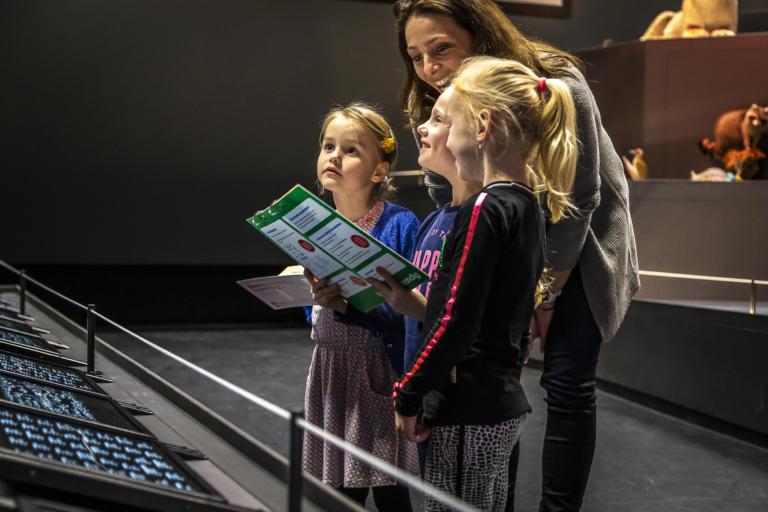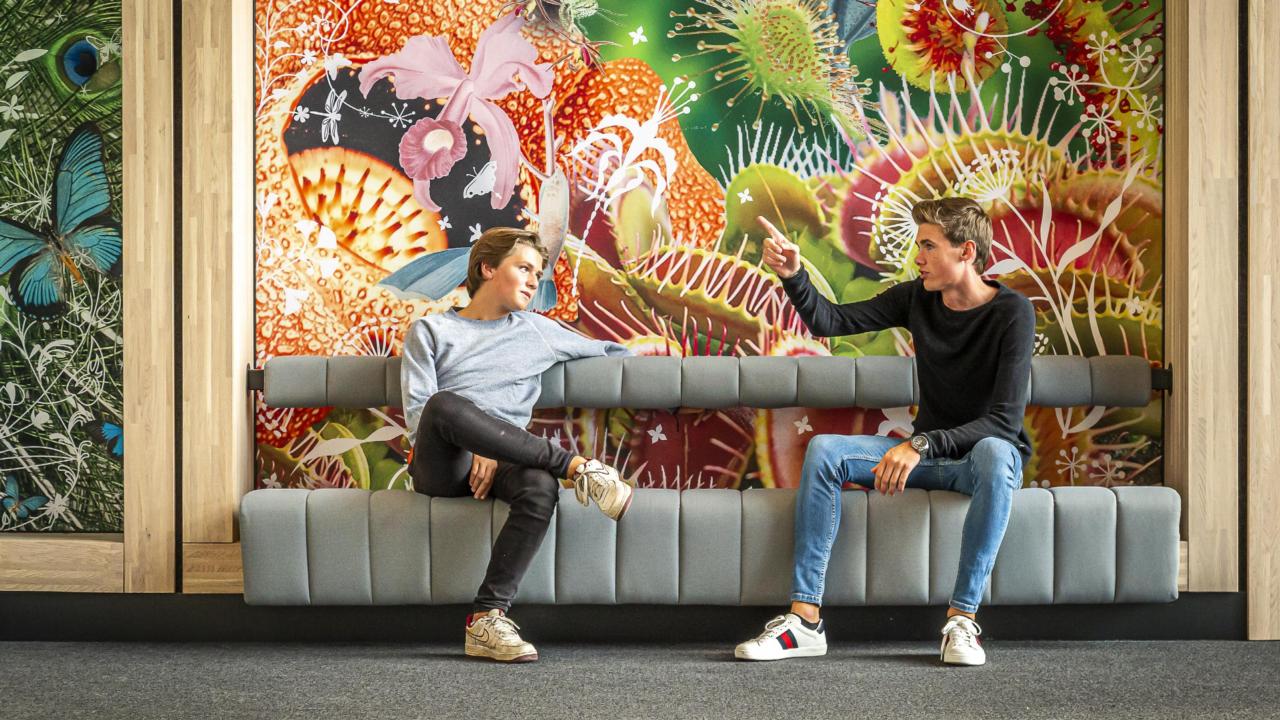
All animals are different, but they each have a range of tricks up their sleeve. What is the most useful hide to avoid being noticed? What do the legs of animals who can jump very high look like? How do their ears help them survive? Explore the museum for animal parts to find out bit by bit which animal is hidden on your card. It really is an amazing type of animal...
Everything you need to knowin a row
- Type: exhibition program
- Level: groups 3 and 4 (6–8 years old)
- Length: 90 minutes
- Number of pupils: at least 15, but no more than 108 (At the 10:00h starting time, there is room for a maximum of 144 students. Please inquire about availability.)
- Areas: the Life, Ice age and Seduction galleries
- The school supplies: one parent/supervisor for every five pupils
- Naturalis supplies: one educational assistant
- Main objective: pupils compare animal parts and find out which useful purpose they serve
- Link to core objective: pupils are taught about the structure of plants, animals and humans and about the form and function of their constituent parts
- Keywords: body shape, function, environment
Course of the programat the museum
The program consists of three parts. The schedule given below is an indication only.
0-20 minutes: presentation
Pupils and parents/guardians start in the reception area with an interactive presentation by an educational assistant. Many animals pass by with emphasis on their parts. What are the different legs, tails, hides, snouts and ears? And what functions do they have? Ears are useful for hearing, but for what else? In the presentation, parents/guardians will receive instruction on how to support students during the program in the gallery.
20 - 60 minutes: assignment 'look for animal parts'
In the first assignment, five pupils, along with their assistant, search for parts of animals in either the gallery Life or Seduction. Each group is given a tracking card and for each pupil, their own animal card. For example, which tails are useful for swimming, hitting or hitting on a partner? When the pupils have found all the tails, they open the right box on their animal card. Then they work together to find the next body part. Once students have cleared all the parts on their animal card, they see a nonexistent animal composed of parts from real animals.
60 - 90 minutes: assignment 'search for similar animals'
For the second assignment, each group visits a different gallery (Ice Age or Seduction). Pupils investigate which animal parts resemble the body parts on their own map. They choose a body part together and go around the gallery looking for animals with that part. They can repeat this a few times. If there is time left, they can also do this in a third room. Afterwards, pupils take their animal cards back to school.
Booking infoprepare your visit
Everything you need to know about practical matters such as parking, lockers and house rules.
